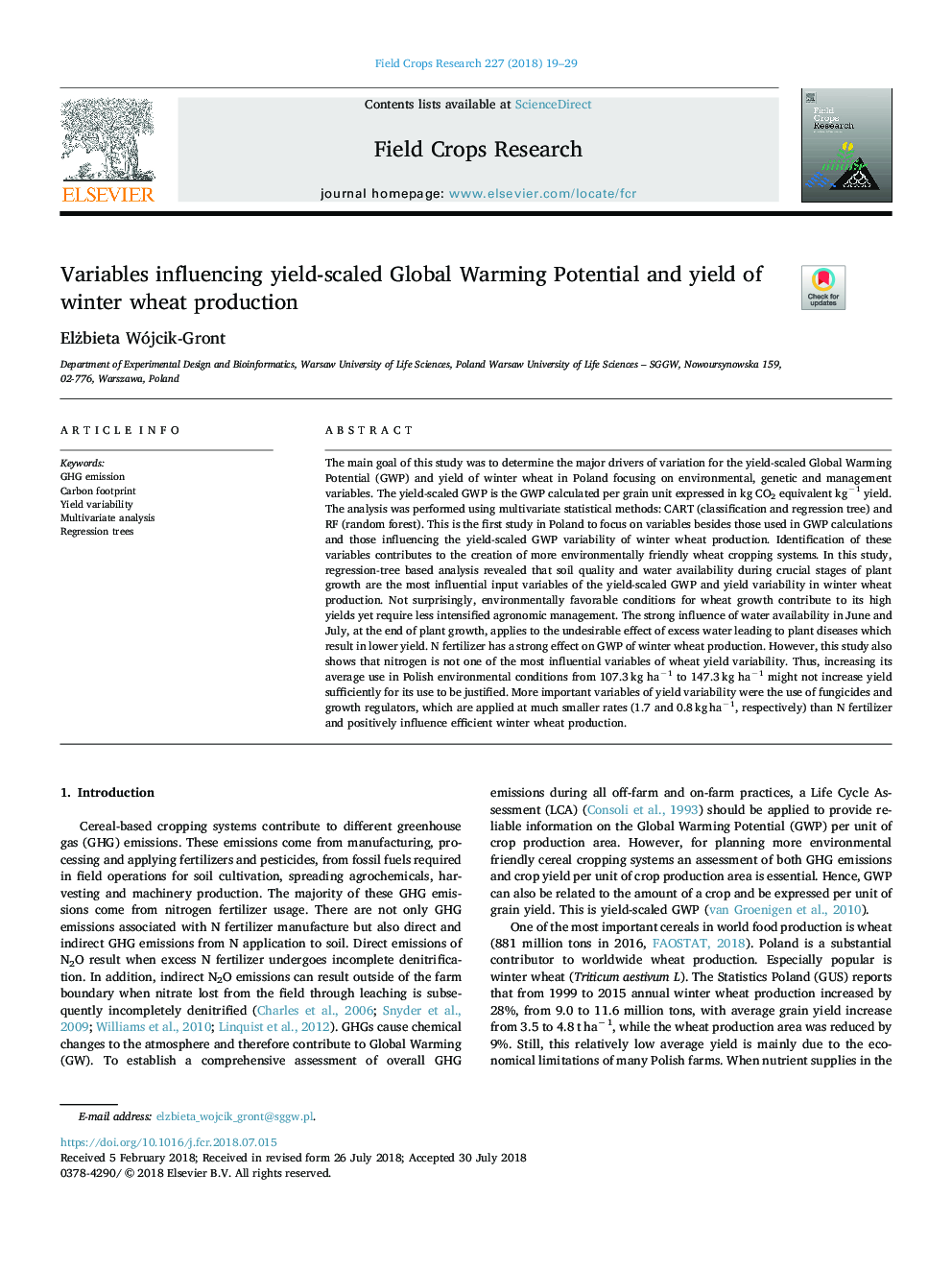| کد مقاله | کد نشریه | سال انتشار | مقاله انگلیسی | نسخه تمام متن |
|---|---|---|---|---|
| 8879046 | 1624636 | 2018 | 11 صفحه PDF | دانلود رایگان |
عنوان انگلیسی مقاله ISI
Variables influencing yield-scaled Global Warming Potential and yield of winter wheat production
ترجمه فارسی عنوان
متغیرهای موثر بر توان بالقوه گرمایش جهانی و عملکرد تولید گندم
دانلود مقاله + سفارش ترجمه
دانلود مقاله ISI انگلیسی
رایگان برای ایرانیان
کلمات کلیدی
انتشار گازهای گلخانه ای، رد پای کربن، تنوع عملکرد، تجزیه و تحلیل چند متغیره، درختان رگرسیون،
موضوعات مرتبط
علوم زیستی و بیوفناوری
علوم کشاورزی و بیولوژیک
علوم زراعت و اصلاح نباتات
چکیده انگلیسی
The main goal of this study was to determine the major drivers of variation for the yield-scaled Global Warming Potential (GWP) and yield of winter wheat in Poland focusing on environmental, genetic and management variables. The yield-scaled GWP is the GWP calculated per grain unit expressed in kg CO2 equivalent kgâ1 yield. The analysis was performed using multivariate statistical methods: CART (classification and regression tree) and RF (random forest). This is the first study in Poland to focus on variables besides those used in GWP calculations and those influencing the yield-scaled GWP variability of winter wheat production. Identification of these variables contributes to the creation of more environmentally friendly wheat cropping systems. In this study, regression-tree based analysis revealed that soil quality and water availability during crucial stages of plant growth are the most influential input variables of the yield-scaled GWP and yield variability in winter wheat production. Not surprisingly, environmentally favorable conditions for wheat growth contribute to its high yields yet require less intensified agronomic management. The strong influence of water availability in June and July, at the end of plant growth, applies to the undesirable effect of excess water leading to plant diseases which result in lower yield. N fertilizer has a strong effect on GWP of winter wheat production. However, this study also shows that nitrogen is not one of the most influential variables of wheat yield variability. Thus, increasing its average use in Polish environmental conditions from 107.3âkg haâ1 to 147.3âkg haâ1 might not increase yield sufficiently for its use to be justified. More important variables of yield variability were the use of fungicides and growth regulators, which are applied at much smaller rates (1.7 and 0.8âkgâhaâ1, respectively) than N fertilizer and positively influence efficient winter wheat production.
ناشر
Database: Elsevier - ScienceDirect (ساینس دایرکت)
Journal: Field Crops Research - Volume 227, 1 October 2018, Pages 19-29
Journal: Field Crops Research - Volume 227, 1 October 2018, Pages 19-29
نویسندگان
Elżbieta Wójcik-Gront,
